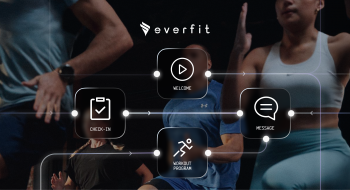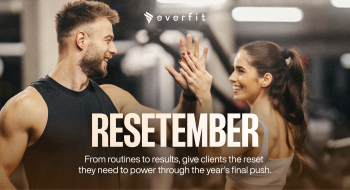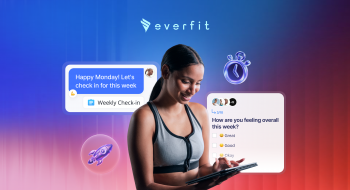If you’re going through similar experiences as I am, you’ll be taking an unplanned vacation at the moment because the gym has been shut down due to the COVID-19 outbreak. Your clients may be texting and calling you frantically, wondering about the game plan, and worried that they’ll lose progress. You may be panicking a little because all your clients have so many different individual needs and it seems impossible to manage them all. At the same time, you’re worried about losing income over this shutdown and you’re stressed about paying bills and retaining clients! Remote training is your savior!
I’m based out of Seattle, the epicenter of this outbreak in the United States. Things went from 0 to 100 real fast and I can confidently say that none of us were quite prepared for the magnitude of impact this has had on gyms and trainers financially. My training program includes weekly programming with workouts for clients to do on their own when they’re not training with me, so transitioning them to remote training was not entirely too difficult. However, with the gym closures and statewide quarantine, there are other things to consider when transitioning in-person clients to strictly at-home remote training.
Here are 4 things to remember when transitioning in-person clients to at-home remote training:
1. Not everyone has equipment.
This is a big one. While at-home workouts with little to no equipment are fairly simple to write, it can be hard to customize these kinds of workouts to people with injuries or limitations. I suggest putting together a small list of affordable equipment people can order to start a mini home gym. This is the list I gave my clients:
- Long resistance bands and short resistance bands
- Dumbbells: 10 to 30lbs or adjustable dumbbells
- Furniture sliders
- Foam roller
Having these pieces of equipment helps you assign exercises for those with limitations (i.e. those who shouldn’t be doing 50 air squats or jump squats) and also can help to safely increase the difficultly/intensity for those more advanced clients.
Here’s an example of an advanced workout I’d assign a client with these pieces of equipment:

2. Stay engaged with your clients.
Whether this means setting up weekly Zoom calls or doing virtual training sessions through Zoom, you want to make sure you’re not just sending clients workouts and leaving them to their own devices. This not only devalues the trainer-client relationship, but can discourage clients. Make sure you set up a ready channel of communication with each client so you can stay connected and engaged in the time you won’t see each other in person. Make sure you make it clear that you’re there for them to ask questions, communicate concerns, and that you want weekly updates to increase engagement.
3. Make sure your clients know the plan!
With all that being said, make sure you clearly state your plan of action! Make sure your clients know what to expect from you, how available you’ll be to communicate, and what their workouts will look like. Make sure your clients are willing to purchase equipment and if they’re not, tell them they need to communicate that with you so you can design the best workout for their situation. Be on the lookout for any potential questions that may come up and address any unexpected questions readily.

4. Above all, listen to their needs.
Transitioning clients from in person training to remote training is hard, especially if your clients are not used to remote training! Be there to listen to your client’s concerns and needs. Remember, you are their authority when it comes to exercise, but you need to make sure you’re addressing questions and concerns. A disinterested trainer is usually a fired trainer. This is especially important when you are dealing with in-person clients who are more used to the attention provided in a training session. Remote training may seem like less work, but it can be hard to keep up with texts and emails. Make sure you have a system in place to help you stay on track.
I’ll usually respond quickly to client text messages but I’ll have a designated time to reply to emails, since those can easily get lost in my inbox. I’ll spend an hour or two each morning, either responding to emails from clients or writing an email announcement to send to everyone. I find this to be the most effective in that I have enough time to formulate thoughtful responses and address each question in depth.
Everfit has made my transition for entirely remote coaching a lot easier for my in-person clients.
If you’re like many of us personal trainers who are scrambling to get workouts to clients, you might want to consider investing in Everfit. I’ve found it extremely easy to start using unlike other training platforms out there. With its intuitive interface, clients are able to very easily start tracking their workouts, logging meals, and recording body metrics with little to no guidance from you. Plus you can see workouts being logged in real time. Everfit has made my transition for entirely remote coaching a lot easier for my in-person clients.
Besides investing in a training platform to make your transition that much smoother, set yourself up as a resource on social media. A lot of people spend time scrolling through Instagram when they’re stuck at home. Post tips on how to set up your home workouts on your feed. Have videos of you in your story doing your own home workout. Reshare clients when they post themselves doing workouts at home that you programmed. There’s a lot of content you can put out to present yourself a competent fitness professional as well as provide resources and ideas to people.
Go into these next couple weeks with the mindset to give and to help. Be there as a resource but also as a friend and support system.
Lastly, exercise is more than just a workout. For a lot of people including myself, exercise is a stress reliever. It’s a way to let out pent-up stressful energy. It’s an outlet. Helping people to exercise safely and creatively with the resources they have available to them is a huge gift. Go into these next couple weeks with the mindset to give and to help. Be there as a resource but also as a friend and support system. Working out may not be at the forefront of every client’s minds, but you can help encourage your clients to stay active and to not take their health for granted in these uncertain times.
Stay Healthy!















